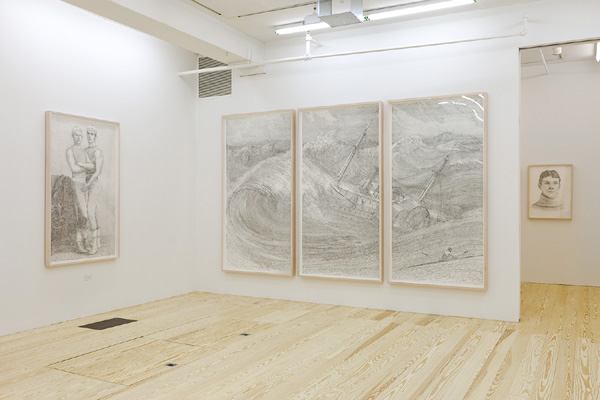Winkleman Gallery Re-Opens to Showcase Michael Waugh’s Evocative New Exhibit
Political themes and artwork are a common pair in many classic and contemporary works of art, and Michael Waugh’s latest exhibit at the Winkleman Gallery in New York does not disappoint. In its grand re-opening following Hurricane Sandy, the gallery is featuring Waugh’s “Offenses Against One’s Self” exhibition in collaboration with Schroeder Romero.
The solo exhibit features micrographic drawings that include several lines of delicately written text, labor-intensive sculptures and videos, including documentation of an eight-hour performance reading. The central theme of the exhibit, Offenses Against One’s Self, was repurposed from the title of an essay written in 1785 by British philosopher and jurist Jeremy Bentham, in which he argued for the elimination of laws that limited same-sex relations in his era. However, Waugh’s fluid theme, though political, does not revolve around this issue. Instead, the New York artist focuses on capitalism, and draws inspiration from Adam Smith’s book The Wealth of Nations.
The book has historically been used as a resource and argument for eliminating laws that restrict capitalism and for promoting a libertarian, greed-is-good ethos. The text included in many of the drawings are taken from Smith’s work. Interestingly, Waugh’s images include shipwrecks, mass shootings, lynchings, and model-perfect young men along with these lines of text to characterize greed as the “offense against one’s self.”
Waugh, known for incorporating contradictory elements in his artwork, also features another of Smith’s works, entitled The Theory of Moral Sentiments. The theme of the book discusses social responsibility and flies against the greed-promoting message in his former works.
The artwork itself can only be described as simple, rugged and almost parochial. This was perhaps done to focus on the straightforward and primary message at large, rather than the fine details of the imagery itself. In addition to the aforementioned drawings exhibiting violence and catastrophe, there are also a number of other softer pieces – such as landscapes and portraits – revolving around the same themes. It is the text expertly written in many of these drawings that demonstrate Waugh’s laborious efforts and evocative meaning in the exhibit.
If you are interested in classical and representational artwork laced with overwhelming themes, this may be a good exhibit to visit. Michael Waugh’s artwork will be showcased at the Winkleman Gallery through February 9, 2013.

